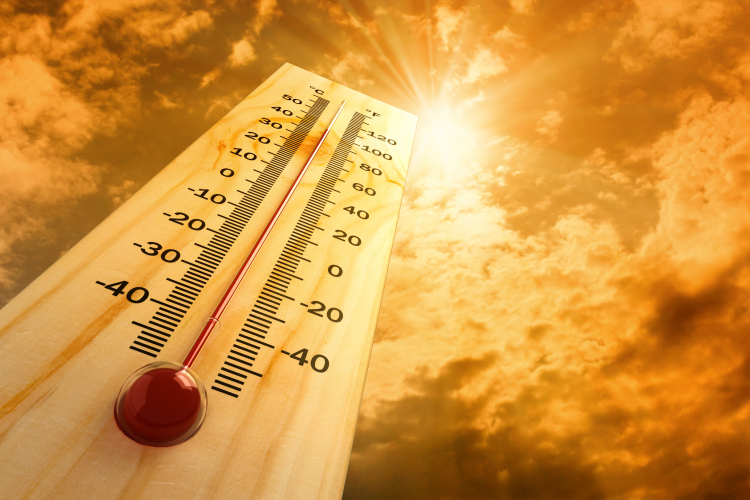Extreme weather: The heat is on

Record-breaking temperatures this summer led to wildfires and city blazes, providing risk managers with visceral examples of the physical risks created by the climate crisis.
Heatwave temperatures broke previous records this summer. In July, temperatures reached in excess of 40oC across much of the UK. The burning effects of the climate emergency, it seems, are now impossible to ignore, creating risks that must be managed as best they can, but cannot be entirely transferred or mitigated.
With temperatures peaking on July 19, London fire crews attended to 1,146 incidents in a single day. One large fire in east London consumed 16 homes. At one stage, London’s firefighters were attending 15 large-scale incidents simultaneously, some requiring between 10 and 30 fire appliances to be at the scene.
The situation caused the London Fire Brigade to report its busiest day since the Second World War. The National Fire Chiefs Council (NFCC) was briefing government ministers on an hourly basis.
Wildfires raged after the sun-parched countryside was turned into kindling. By the end of July, England and Wales had reported 442 wildfires, up from 247 last year, according to the NFCC.
“Everything is bone-dry and services need to recognise the risk they’ve now got. If they don’t, then they’re naïve,” David Swallow, NFCC tactical adviser, told BBC News. “There are very urban services that think that wildfires are low down on the risk list. I understand the need to prioritise resources, but there needs to be a review,” he said.
The NFCC blamed climate change directly for the fires, saying fire safety advice should be followed not just during the heatwave, but throughout the year.
Munich Re provided a broader European perspective to wildfire risks in its half-year round-up of natural disasters. Climate change was again directly linked. The German reinsurer noted that extreme heat and arid conditions in early summer led to water scarcity and wildfires, especially in Italy, Spain and Portugal.
Munich Re noted that human-caused climate change has already resulted in annual average temperatures rising by more than 1.5°C in many parts of Europe compared with when systematic weather records began towards the end of the 19th century – above the average global warming of 1.2°C.
Ernst Rauch, Munich Re’s Chief Climate Scientist, said: “What used to be warm days will be hot days, what used to be hot days will be extremely hot days. Droughts and wildfires are a direct consequence of this.”
Insurance broker Aon provided a June 2022 update on wildfire risk, citing wildfires in New Mexico and noting more extreme conditions experienced in the US beyond those seen in previous years.
“Wildfires have moved beyond a seasonal threat to a year-round peril in many areas. Several serious wildfires have already started this year – way ahead of the usual peak period,” Aon said.
Careful construction considerations, government action and safe forestry practices can all help to lower the potential damage caused by wildfires, the broker emphasised.
“Fire-resistant materials can prevent a building from burning or slow the speed at which it burns, allowing firefighters more time to arrive at the scene. Keeping bushes or shrubs away from buildings can eliminate a source of fuel and allowing more distance between buildings can make it more difficult for fires to spread by embers blowing from roof to roof,” said Aon.
“Developing and enforcing building codes aimed at addressing wildfire risks can also reduce the threat to lives and property. Infrastructure improvements…can offer critical help as well. And forest management efforts such as prescribed burns and clearing brush can eliminate potential fuel for wildfires,” the broker added.
Wildfire risks can spread far beyond the flames, Aon noted. “For example, smoke travelling great distances can create health issues in other areas. Business interruptions and damages due to wildfires can also lead to supply chain disruptions for businesses elsewhere.”
Insurer Zurich emphasised supply chain risks from wildfires in a climate risk update in April.
“Businesses need to assess their supply chain’s exposure to physical climate risks, then adapt and strengthen areas that are vulnerable,” said Björn Hartong, Zurich’s Global Risk Engineering Practice Leader for Marine & Security.
“For instance, investing in holding more safety stock in case part of the supply chain is interrupted by poor weather. There is a cost involved and a possible loss of efficiency, but it will be an investment in certainty and ultimately customer satisfaction,” Hartong added.
Technology has an important role in better forecasting, Aon noted. Forecasting tools can determine where conditions are right for fires to occur, how quickly they might grow and where they might spread.
“We’re not necessarily forecasting specific locations where we’re expecting there to be a fire,” said Steve Bowen, meteorologist and Head of Catastrophe Insight at Aon. “We’re basically highlighting areas where conditions are most favourable for fires to rapidly spread should there be a fire that actually does get ignited.”
Forecasting the speed and direction of a fire has become tougher, Aon noted, as the behaviour of wildfires has changed. Now, some fires are hot enough to create their own weather patterns, Aon said.
“When that happens, you can get really fast-shifting fires within that environment that may be different than what people expect,” said Bowen. “So, it’s very, very, very hard to pinpoint specifically where a fire is going to happen, but we can certainly help people get a better sense of conditionally what days may be higher risk than others.”
